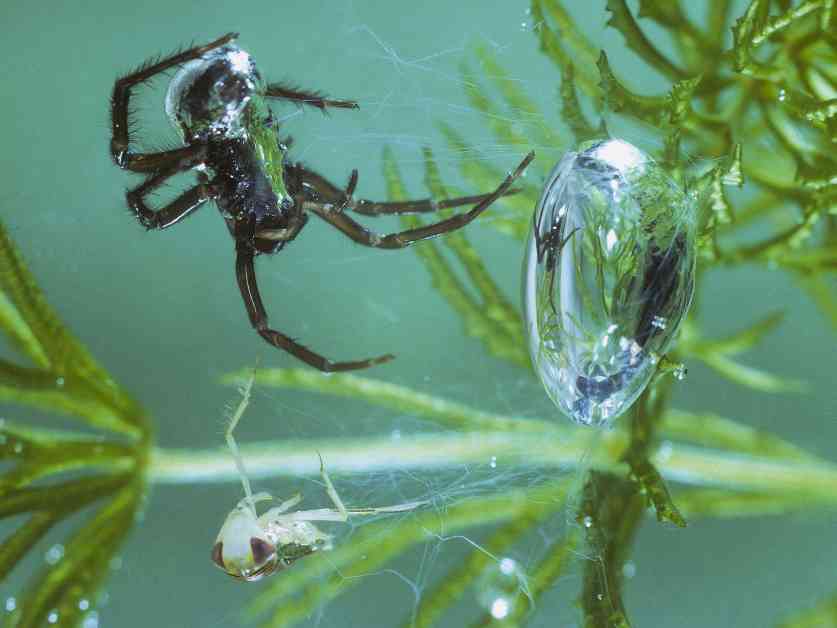Spiders are fascinating creatures that are known to adapt to various environments, including aquatic habitats. Researchers have discovered that some spider species live near or in water, such as the jumping spider Marpissa marina found on pebbly beaches in New Zealand. These aquatic spiders face challenges such as disappearing habitats due to climate change and human activities.
According to scientists, there are numerous spider species that spend time in or near water, with more waiting to be discovered. It is believed that spiders evolved aquatic preferences independently multiple times throughout history. The reasons that drove land-dwelling spiders to move to watery habitats are not entirely clear, but it is speculated that they were drawn by food sources or driven by unsafe conditions on land.
Spiders, in general, possess water-friendly features such as waxy exteriors and hairs that trap air bubbles, making it easier for them to navigate on water surfaces. Some spiders, like the diving bell spider, take their aquatic adaptations to the next level by breathing, hunting, and reproducing underwater. These spiders have unique behaviors and structures that enable them to thrive in freshwater environments.
Aquatic spiders, especially those living in intertidal zones or saltwater environments, face additional challenges such as maintaining proper salt levels and dealing with low-oxygen environments. Researchers have identified genetic variations in the mitochondria of aquatic spiders that help them cope with these conditions. Additionally, the silk glands of water spiders contain unique amino acids that contribute to the water-repelling properties of their silk.
Despite their remarkable adaptations, aquatic spiders are at risk of extinction due to habitat loss and degradation. Scientists warn that species like the diving bell spider and the fen raft spider could face serious survival challenges as wetlands continue to disappear. The loss of these habitats may lead to an increase in the extinction risk for aquatic spiders, highlighting the urgent need for conservation efforts to protect these unique creatures.
In conclusion, the world of aquatic spiders is filled with fascinating adaptations and behaviors that allow them to thrive in challenging environments. However, the increasing threats posed by habitat loss and environmental changes emphasize the importance of studying and protecting these incredible creatures before they disappear forever.

